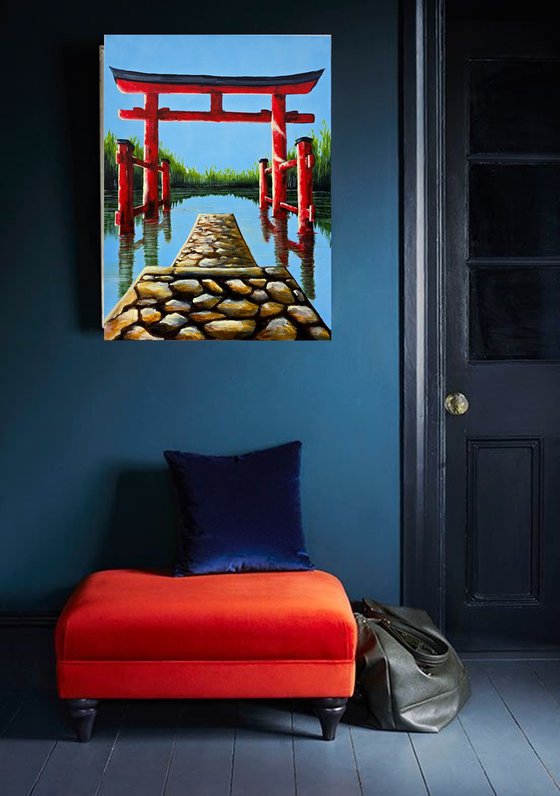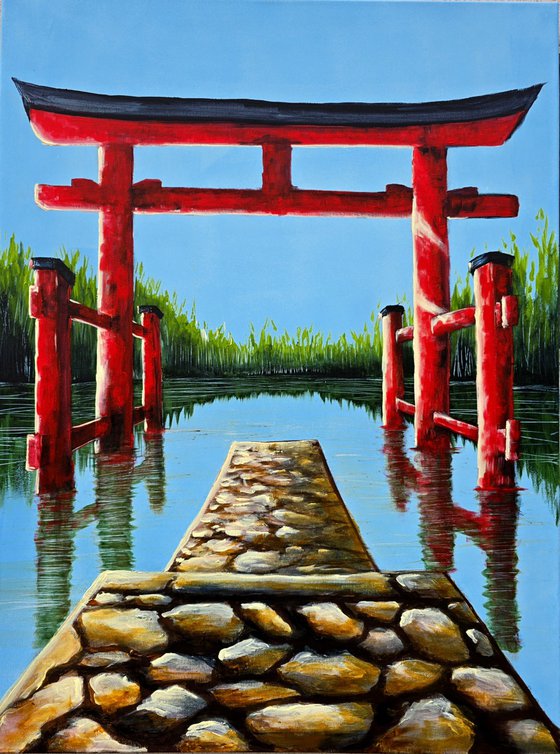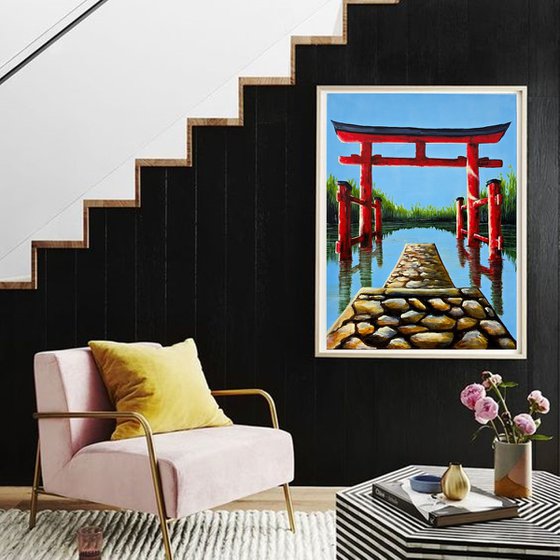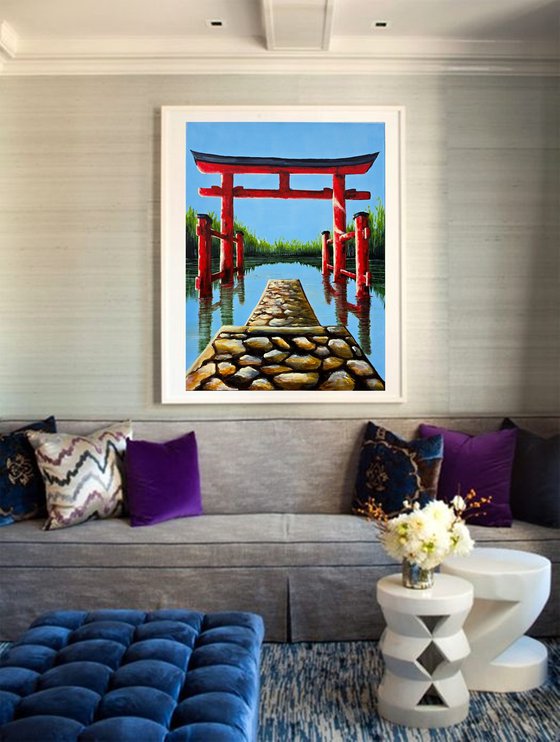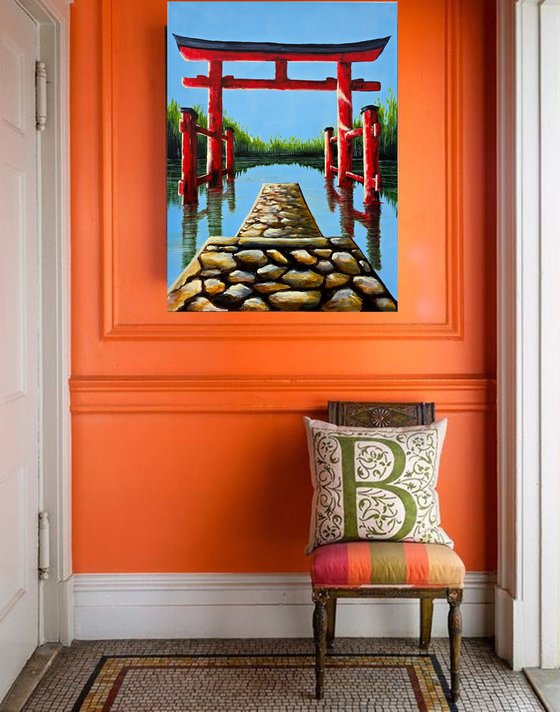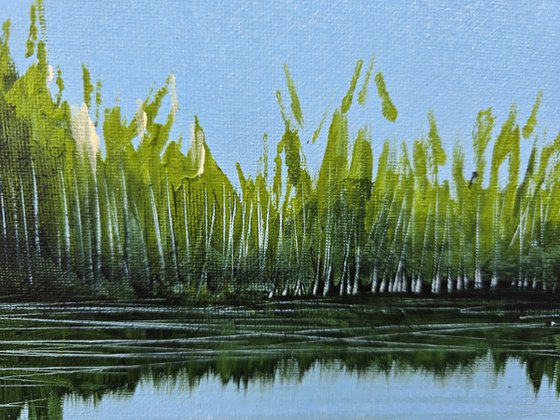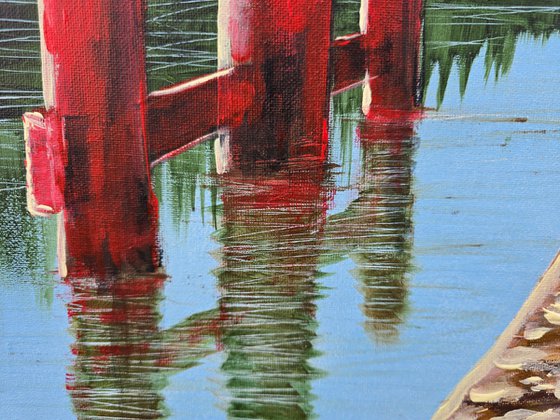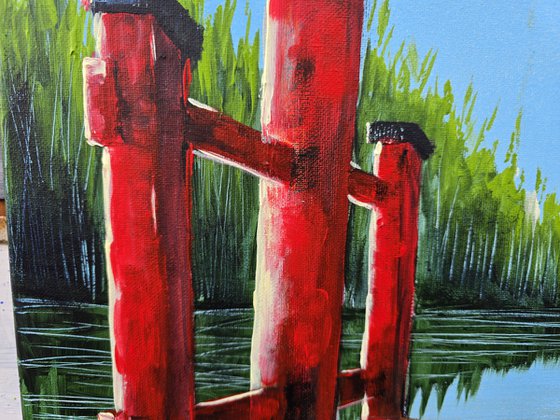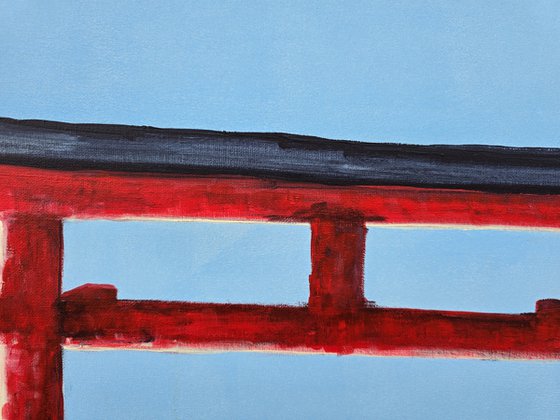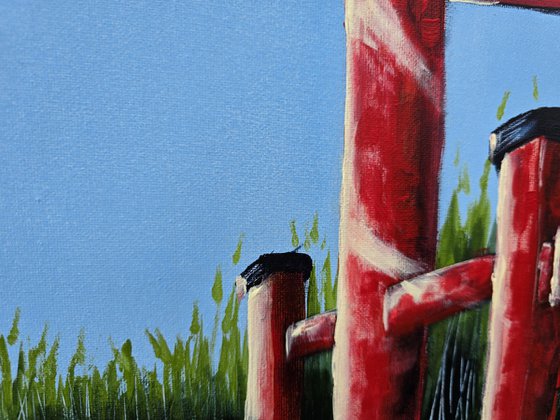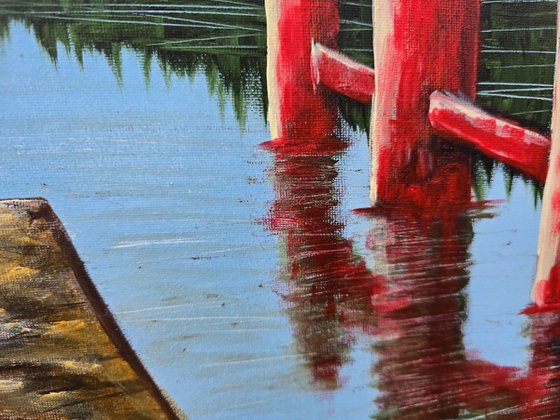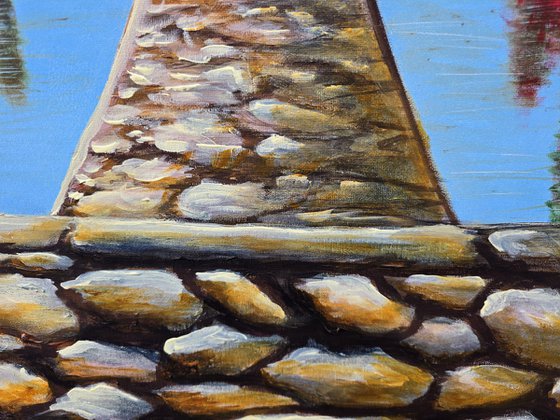Main Navigation
Original artwork description:
This acrylic painting depicts a serene and evocative scene centered around a vibrant red Torii gate partially submerged in calm water. The gate, a traditional Japanese architectural element often found at the entrance to Shinto shrines, is the focal point, its bold color contrasting beautifully with the tranquil blues and greens of the water and surrounding vegetation.
The artist employs a simplified, almost minimalist style. The brushstrokes are visible, adding to the painting's texture and a sense of immediacy. The color palette is limited but impactful, emphasizing the contrast between the warm reds of the Torii and the cool tones of the water and sky. The perspective is carefully chosen, leading the viewer's eye directly towards the gate and across a stone pathway that extends into the water. This creates a sense of depth and invites contemplation.
The painting evokes a sense of peace, tranquility, and quiet contemplation. The still water reflects the sky and the gate, mirroring the scene and creating a sense of harmony. The muted colors and simple composition contribute to the feeling of serenity. There's a subtle air of mystery, too; the pathway leading to the partially submerged gate suggests a journey or a threshold into a different realm. The overall mood is one of meditative calm.
The painting could be interpreted as a visual metaphor for various concepts. The Torii gate itself represents a passage between worlds, a transition from the mundane to the spiritual. The partially submerged gate might signify the blurring of boundaries between the physical and spiritual realms, or the challenges faced in seeking spiritual enlightenment. The path leading to it suggests the journey of self-discovery or spiritual seeking. The calm water symbolizes the peace and serenity that can be found through this journey. There’s no explicit moral, but the painting invites viewers to contemplate themes of spirituality, transition, and the search for inner peace.
Overall, the painting is a successful blend of artistic technique and symbolic meaning. Its simplicity belies a deeper layer of meaning, making it a captivating and thought-provoking piece.
Materials used:
acrylic, gel impasto
Tags:
#landscape #tree #japan #trees #spring #impressionist art #palette knife #landscape painting #spring colors #arhitecture #arhitectural paintings #japan culture #japan architectureThe simmetry of Japan I (2025) Acrylic painting
by Danijela Dan
122 Artist Reviews
Now £364.31 £520.44
30% off sale. Sale ends in 5 days 18 hours
- Acrylic painting on Canvas
- One of a kind artwork
- Size: 60 x 80 x 4cm (unframed)
- Ready to hang
- Signed on the front
- Style: Impressionistic
- Subject: Landscapes, sea and sky
Loading
Original artwork description
This acrylic painting depicts a serene and evocative scene centered around a vibrant red Torii gate partially submerged in calm water. The gate, a traditional Japanese architectural element often found at the entrance to Shinto shrines, is the focal point, its bold color contrasting beautifully with the tranquil blues and greens of the water and surrounding vegetation.
The artist employs a simplified, almost minimalist style. The brushstrokes are visible, adding to the painting's texture and a sense of immediacy. The color palette is limited but impactful, emphasizing the contrast between the warm reds of the Torii and the cool tones of the water and sky. The perspective is carefully chosen, leading the viewer's eye directly towards the gate and across a stone pathway that extends into the water. This creates a sense of depth and invites contemplation.
The painting evokes a sense of peace, tranquility, and quiet contemplation. The still water reflects the sky and the gate, mirroring the scene and creating a sense of harmony. The muted colors and simple composition contribute to the feeling of serenity. There's a subtle air of mystery, too; the pathway leading to the partially submerged gate suggests a journey or a threshold into a different realm. The overall mood is one of meditative calm.
The painting could be interpreted as a visual metaphor for various concepts. The Torii gate itself represents a passage between worlds, a transition from the mundane to the spiritual. The partially submerged gate might signify the blurring of boundaries between the physical and spiritual realms, or the challenges faced in seeking spiritual enlightenment. The path leading to it suggests the journey of self-discovery or spiritual seeking. The calm water symbolizes the peace and serenity that can be found through this journey. There’s no explicit moral, but the painting invites viewers to contemplate themes of spirituality, transition, and the search for inner peace.
Overall, the painting is a successful blend of artistic technique and symbolic meaning. Its simplicity belies a deeper layer of meaning, making it a captivating and thought-provoking piece.
Materials used:
acrylic, gel impasto
Tags:
#landscape #tree #japan #trees #spring #impressionist art #palette knife #landscape painting #spring colors #arhitecture #arhitectural paintings #japan culture #japan architecture14 day money back guaranteeLearn more
